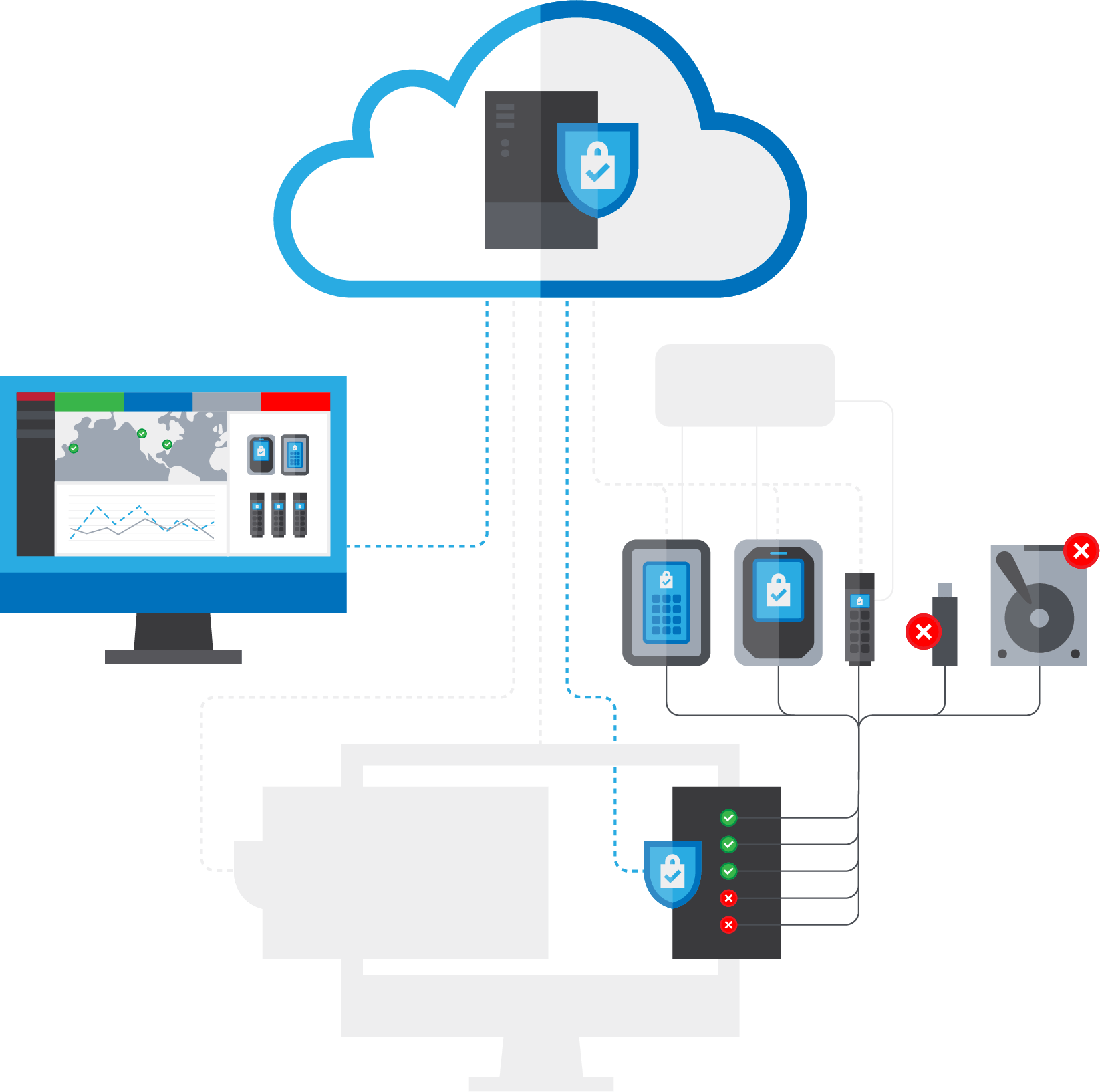SAFECONSOLE PORTBLOCKER
Prevent Data Loss With USB-Port Blocking
PortBlocker allows you to manage USB ports on Windows and Mac machines. You can block unapproved devices and ensure that your workforce can only mount whitelisted USB devices to workstations with PortBlocker installed. Control which devices are allowed, set policies for different groups, set ports in read-only mode, see audit logs and activity, and more. PortBlocker is a solution managed by SafeConsole.
BENEFITS

Easy and Automatic
Admins will be notified when a blocked USB device is inserted and PortBlocker will deny access to the device. The instance will automatically be reported to the SafeConsole audit log. Admin can easily whitelist device for a set amount of time or permanently.
Seamless Integration
Seamlessly running in the background of user workstations, PortBlocker was built to work alongside existing SafeConsole features and policies.
Active Monitoring
When blocked USB devices are detected in a USB port, users are unable to read from or write to the USB and SafeConsole admins will receive notifications in the PortBlocker activity log within the central management platform.
Always-On Protection
Once installed by an admin, PortBlocker will start automatically and run in the background of the user’s workstation and cannot be disabled by a non-privileged user or external programs.
Policy Enforcement
Restrict mass storage devices through SafeConsole whitelist policy (VID, PID, and serial number). Policies are updated automatically from SafeConsole.

Real-time Reporting
Endpoint activity audits are reported to SafeConsole in the Device Audit Logs.
HOW IT WORKS
Ensure that people only use approved USB devices to prevent malware intrusion or accidental file loss.

More SafeConsole Products
Remotely provision, configure, manage, and audit your fleet of encrypted USB drives, while also unlocking powerful security features for SafeConsoleReady™ drives.
Resources
SafeConsole Demo